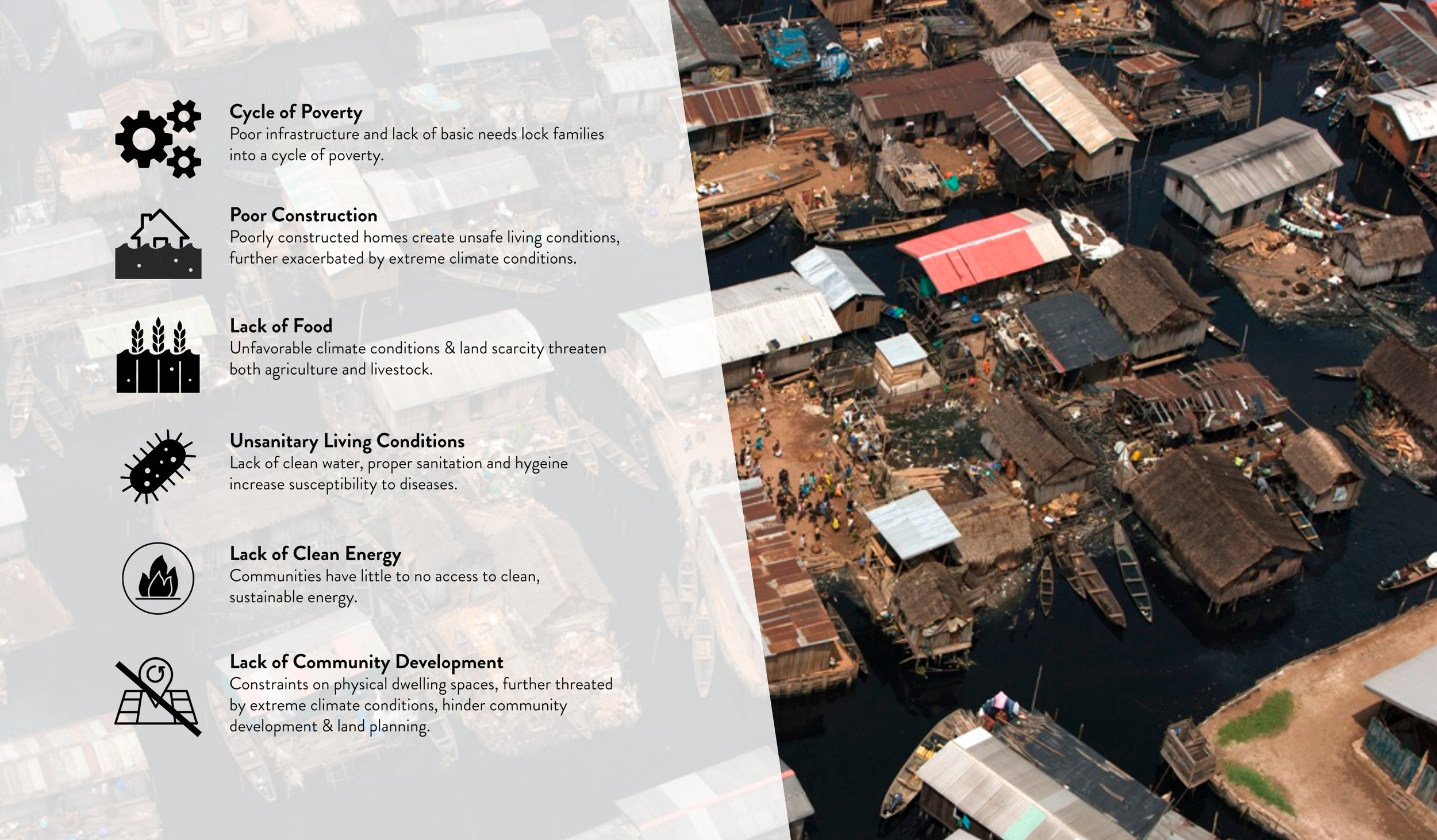75,500 PEOPLE EXPERIENCING HOMELESSNESS IN LOS ANGELES COUNTY*
According to the Los Angeles Homeless Services Authority (LAHSA) 2023 Homeless Count, there are 75,518 people experiencing homelessness in Los Angeles County, a 9% increase from the 2022 homeless count.
Los Angeles holds the count for the highest number of people experiencing homelessness in all of the United States.
According to The Institute of Global Homelessness (IGH), The United Nations Human Settlements Program estimates that 1.6 billion people live in inadequate housing, and the best data available suggest that more than 100 million people have no housing at all.
65 MILLION FORCIBLY DISPLACED
1 BILLION DWELLING IN SLUMS
Countless families live without access to clean water, power, waste management, sanitation and safe, sustainable homes. Poorly-constructed communities with little to no infrastructure lock countless families into a cycle of poverty, generation after generation. So much energy and time is lost to responding to the volatile environment around them that families have very little to invest in other areas like economic development, education, etc.
According to the United Nations High Commissioner for Refugees (UNHCR), an annual average of 21.5 million people have been forcibly displaced by weather-related events – such as floods, storms, wildfires and extreme temperatures – since 2008. These numbers are expected to surge in coming decades with forecasts from international thinktank the IEP predicting that 1.2 billion people could be displaced globally by 2050 due to climate change and natural disasters.
LifeArk is designed to be a tool that will support the community comprehensively, enabling sustainable transformation.
Capacity-building initiatives have little lasting impact if these basic needs are not addressed; however, current methods of developmental aid are unable to respond to such a rapidly growing challenge. Rather than implementing temporary solutions, our response to the challenge of slum dwellers and displaced peoples must be a systemic intervention that revitalizes the entire community for the long-term.
Around 1.1 billion people globally have no access to improved water supplies and 2.6 billion people lack proper sanitation. More than 2.2 million people in these developing countries die from preventable diseases associated with lack of access to clean water and sanitation.
Refugee camps designed as temporary shelters are housing families for upwards of 30 years. Without proper support, these refugee communities scrape by in very poor conditions, unable to thrive.
Two-thirds of the global refugee population – over 10 million refugees – live in protracted refugee situations in 30 countries.

